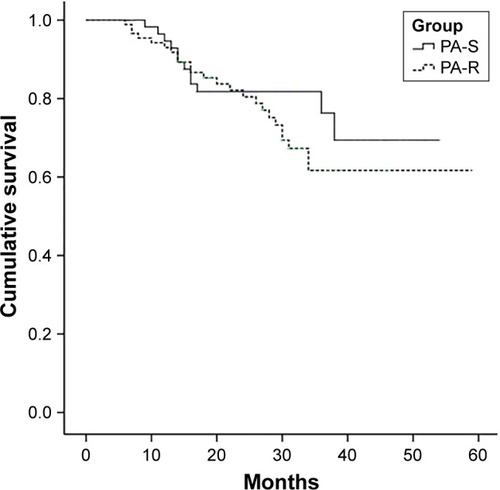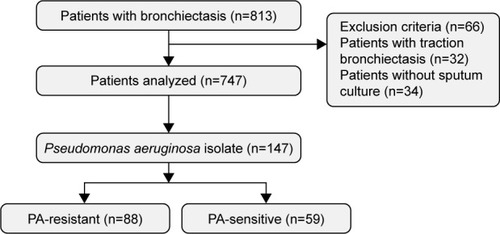Figures & data
Table 1 Demographic and clinical characteristics of bronchiectasis patients with and without PA-resistant in sputum
Table 2 Factors associated with the presence of PA-resistant in patients with bronchiectasis in a logistic regression model
Table 3 Demographic and clinical characteristics of bronchiectasis patients according to survival status at the end of the study
Table 4 Variables associated with all-cause mortality in patients with bronchiectasis in a Cox proportional hazard regression model
Figure 2 The Kaplan–Meier survival curves for bronchiectasis patients with PA-R isolate (n=88; 24 deaths) and with PA-S isolate (n=59; 12 deaths).
Abbreviations: PA, Pseudomonas aeruginosa; PA-R, PA-resistant; PA-S, PA-sensitive.

Table S1 MIC interpretive standards of the disk diffusion methodologies for PA according to the CLSI
Table S2 Antibiotic resistance profile of 147 Pseudomonas aeruginosa isolates
Table S3 Baseline and clinical characteristics of bronchiectasis patients with PA-R in non-MDR and MDR groups in sputum
Table S4 Factors associated with the presence of MDR-PA in patients with bronchiectasis in a logistic regression model

